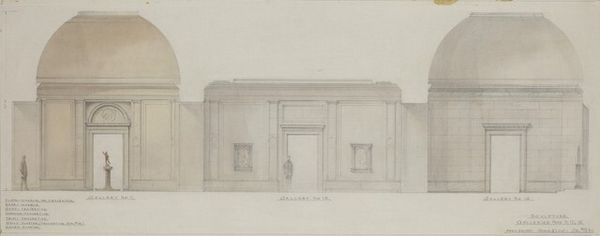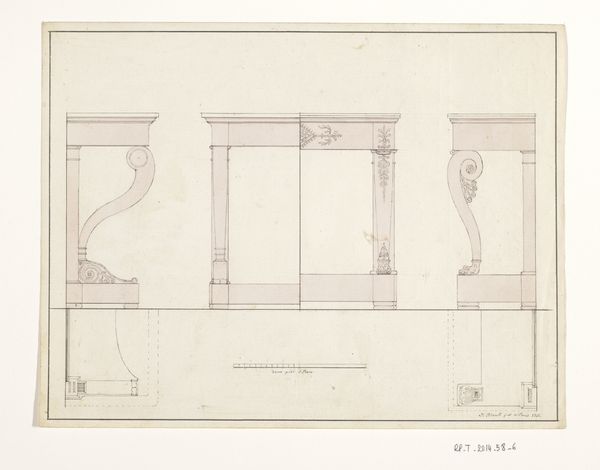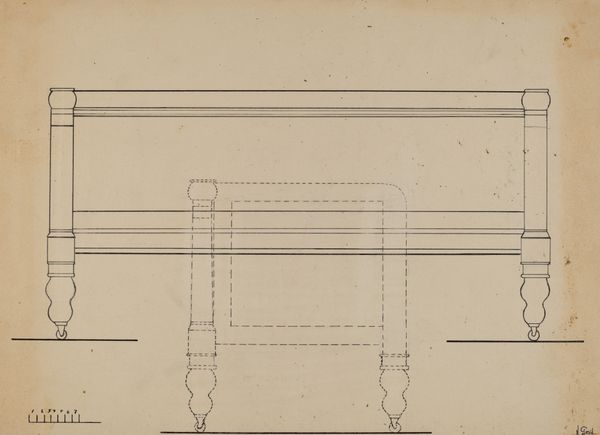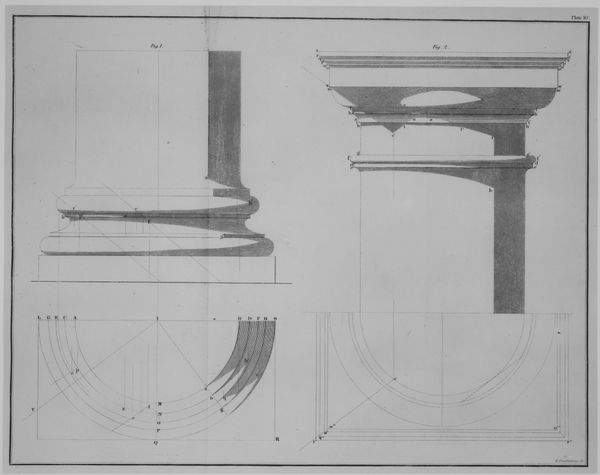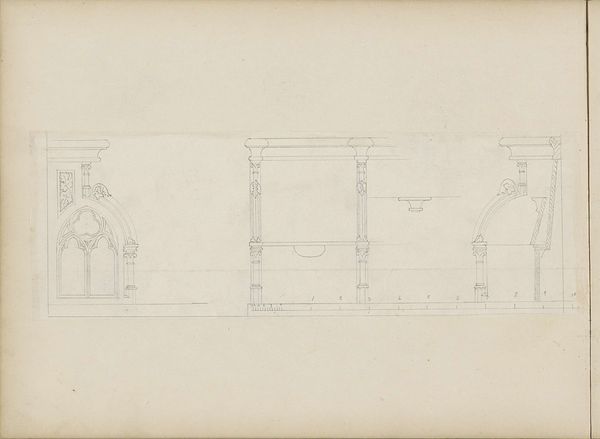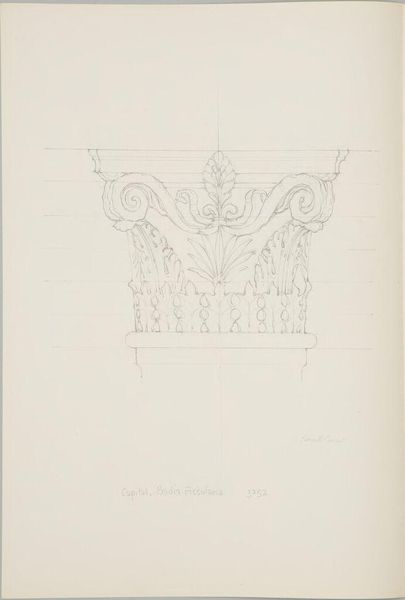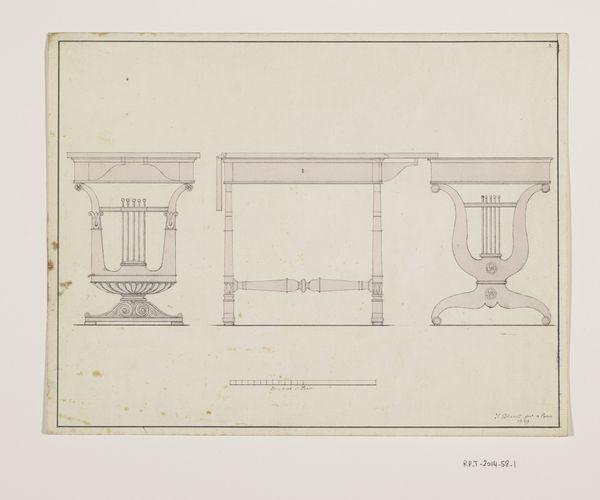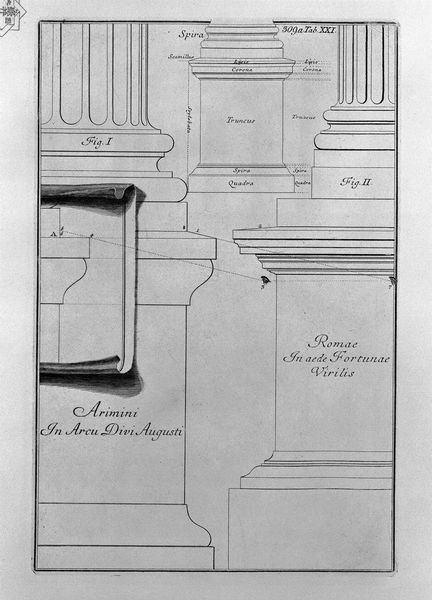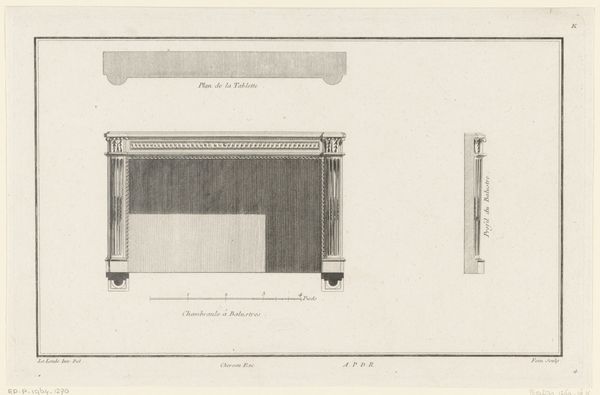
drawing, paper, pencil, architecture
#
drawing
#
light coloured
#
paper
#
geometric
#
pencil
#
academic-art
#
architecture
Dimensions: sight size: 31.5 x 68.1 cm (12 3/8 x 26 13/16 in.)
Copyright: National Gallery of Art: CC0 1.0
Curator: This drawing, made in 1939 by Eggers and Higgins, Architects, is titled "Suggestion for Marble Benches: Garden Court". It's rendered in pencil on paper. Editor: The cool, muted tones and the precise lines give it an air of formality and almost clinical detachment, even though it's meant to suggest something for leisure. There is something about the unpopulated scene that I find melancholy, like an abandoned stage set. Curator: As a suggestion for marble benches within a garden court, its classicizing architectural details draw from a long lineage of civic design intended to evoke stability. The geometric patterns and repeating circles along the length of the bench seat point toward harmony. Editor: I can see that intention, but the benches themselves also evoke a sense of exclusion and control. Public spaces aren't neutral, are they? Marble conveys power and permanence and speaks to notions of a specific, perhaps exclusionary, ideal of beauty and order. Who is this space *for*? Curator: That's a very important question. I look to the choice of symbolic details to understand the message of civic power at play here. The volutes, for example, have long held symbolic meaning, suggesting both turning inward for contemplation and also a decorative element meant to uplift and even inspire. The geometric, interlocking patterns on the bench, too, can speak of wholeness, unity, community, as they were common in ancient Rome. Editor: But in the context of the 1930s, shouldn't we also consider what messages these forms send about cultural authority during that time? Thinking about the political implications of such an idealized vision feels crucial to me. Especially since garden spaces were sometimes restricted during periods of racial segregation. Curator: Absolutely. I appreciate that intersectional perspective. It allows us to engage more fully with the cultural memory embedded within the artwork, considering the psychology behind public spaces. Editor: Right, and maybe interrogating the whole idea of the "public." Curator: Precisely, and how classical design gets reinterpreted to create that perceived vision of "public". The interplay is deeply nuanced, and as we continue our discussion, I hope our audience has the chance to further decode the messages present within the design. Editor: And that our interrogation here opens a critical lens on who gets to enjoy and feel safe in public spaces even today.
Comments
No comments
Be the first to comment and join the conversation on the ultimate creative platform.

